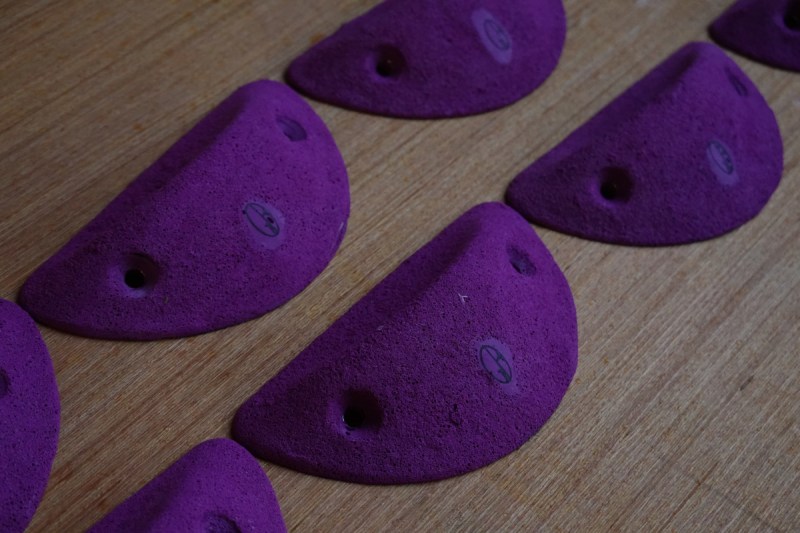Technology enables all kinds of possibilities to mold our environments in the way we best see fit. Plenty of ski resorts use snowmaking to extend their seasons, there are wave pools for surfing hundreds of miles away from oceans, and if you don’t live near any mountains you can build your own climbing wall as well. For the latter, many have turned to 3D printers to create more rock-like climbing grips but plastic doesn’t tend to behave the same as rock unless you do what [Giles Barton-Owen] did and incorporate salt into the prints.
For small manufacturers, typically the way that the rock texture is mimicked is by somehow incorporating sand, permanently, into the grip itself. This works well enough but is often too rough on climbers’ hands or otherwise doesn’t faithfully replicate a rock climbing experience. For these grips, instead of including sand, salt crystals of a particular size were added to a resin that was formed over the 3D printed grip. Once the resin cures substantially, the water-soluble salt can be washed away leaving a perfect texture to grab onto with chalked hands.
While this might not be a scalable method for large-scale climbing grip manufacturers, [Giles] hopes this method will help smaller operations or even DIY climbers to build more realistic grips without having to break the bank. In fact, he has already found some success at his local climbing gym using these grips. The method may be more difficult to scale for larger manufacturers but for anyone who wants to try it out themselves, all that’s needed for this build is a 3D printer, salt, and time.















…and resin
Fair point, I actually have an older video about using salt annealing to texture holds without resin, it’s definitely less effective but also less messy. I suspect if I spent longer refining it could be better. The concept outlined in this video actually stems conceptually from that video and salt annealing in general. PLA holds up less well to wear than PE resin too so isn’t suitable for commercial or even intense home use, especially when exposed to climbing shoes that tend to generate a lot of heat when rubbing
You could cast them fast by 3D printing a thin shell and make a mold from it. Mix salt into some Smooth-On 300Q resin and cast into the shell mold. Then remove the back half of the mold and fill the shell with more 300-Q. After the hold cools, wash and scrub the front to remove the salt.
300-Q sets white. You have about 30 seconds to mix it before it has to be poured into a mold. It’s difficult to color because the extreme curing speed creates enough heat to turn what appears to be deeply colored Part B of the resin into a pastel. Can load up the part B with as much red as you want, it’s going to be Pepto Bismol pink when it cures.
That’s with their transparent dye colors. I haven’t tried 300-Q with their opaque pigment colorants.
Smooth-On has a black Onyx resin that sets almost as fast as 300-Q.
If you had a large number of molds and a double peristaltic pump feeding a dispenser with disposable static mixing tubes you could just squirt the molds full one after another.
Could even take some of your laboriously made 3D printed then salted resin covered holds, spray on some clear gloss lacquer to slightly smooth them, and make silicone molds. After that the textures would be in the mold and duplicated in resin castings.
I’ve been making silicone molds and urethane resin castings for over 20 years and I’ll gladly share tips and techniques I’ve learned so that people just starting with it can avoid the issues I ran into years ago. There are so many things people did with molds and casting years ago that just don’t work all that well or are time consuming or something else that can be done easier, cheaper, and better.
Contact me at g_alan_e at yahoo.com
Hi, use a “cheap” Formlabs Fuse 1 , Nylon PA12 and textured STL look okay for me. Print, uncake, and voila : finish product.
But then it’s not “hack” as “hackaday”… But it work.